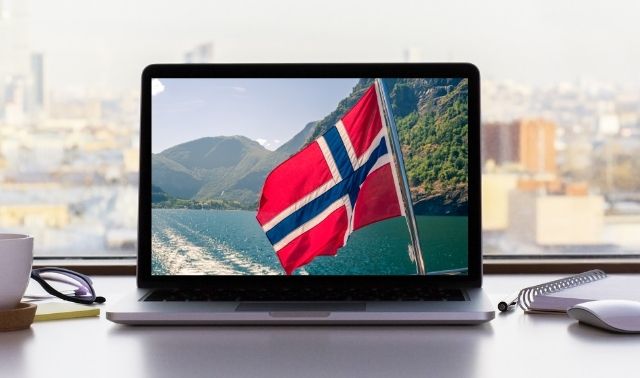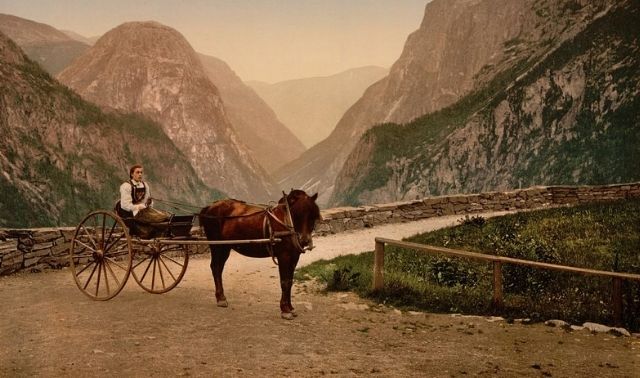Sign up for the Family Tree Newsletter Plus, you’ll receive our 10 Essential Genealogy Research Forms PDF as a special thank you!
Get Your Free Genealogy Forms
"*" indicates required fields
“Intimidating” is a word that often comes to mind when considering genealogical research in Norway.
First, unless you’re a native Norwegian, you’ll probably encounter at least one unfamiliar language. Due to Norway’s history, genealogical records may be in Norwegian, Danish or Swedish, depending on the time period.
In addition, place names you discover in records may be obsolete, renamed since the records were created, or duplicated in different parts of the country. The parish name may be a village or a fork in the road, not the largest town in the area. It’s important to know the time period when a place name was used in order to document it correctly in your research. Finally, you may encounter unfamiliar types of records not commonly used in US research.
These Norwegian genealogy research realities may seem a little intimidating, but they’re not insurmountable with some help. Fortunately, help is plentiful and easily accessible on websites chock full of digitized Norwegian records and databases, language guides, surname advice and more.
Let me introduce you to some of my favorite online resources for working through Norwegian research challenges and getting comfortable with genealogical research in the records of Norway.
1. National Archives of Norway/Digitalarkivet
This free site’s historical records make it one of the most useful Norwegian genealogy resources. You’ll need to register with the site for free, which gets you advanced functionalities. If a page comes up in Norwegian, look for a button for English in the menu bar at the top.
From the home page, click Genealogical Research. Here you’ll find guides to online resources, censuses, and parish registers. “Start Tracing Your Ancestry in Norway” serves as a nice beginner guide.
Click Search Digitised Records to begin document research. In the search box, enter information about a person to search the archives’ extensive collection of records.
Not all records are indexed, so you may have to browse (Menu > Find Source). For that, you’ll need to have a good idea where your family lived. Records are often organized by record type, then geographic area.
Here are some of the most valuable resources on the site:
Parish records
Click Church Books/Parish Registers to see a dropdown of event options (born and baptized, confirmation, married, etc.). In the Geography column, select your ancestor’s locality, down to the parish level. Hit Search to see a listing of the site’s collection, which you can browse or search individually. Digitization is ongoing, so some records aren’t yet available.
Censuses
Digitalarkivet has digitized censuses for Norway, ranging in years from 1664 to 1920. The main search box includes censuses by default; you can drill down to individual censuses from the Advanced Person Search page. Check out the archives’ helpful guide to censuses.
Emigration records
Police in major coastal towns kept records of emigrants between 1867 and 1930. Many are fully transcribed and/or indexed, and searchable by name. The records give information such as name, gender, year of birth, sometimes place of birth, date of emigration and destination, ship or line, and possibly a link to a digital image.
Address books
Similar to city directories, these books are great for locating individuals between census years. Although not many cities are online yet, several years’ worth of books may be available for larger cities.
2. FamilySearch
In addition to providing some searchable indexes for Norway, this multifaceted website has articles and other features to help you trace your Norwegian roots. From the home page, hover over Search and choose Research Wiki from the dropdown menu. Once in the Family History Research Wiki, search for Norway. In the list of results, I suggest starting with the one titled simply Norway Genealogy, which provides topics for getting started and links to other helpful pages. Explore the articles under Beginning Research, for starters.
Other important information to look for here includes:
Counties (Fylker)
This section of the Norway wiki page lists counties with details on each one, including their history, archives, cemeteries, records, maps, photos, towns/parishes and more.
Norwegian terms
Search the wiki for Norwegian word list to get translations for words that are likely to appear in your ancestors’ records and on websites you visit. Most genealogical records are in Norwegian, although some may be in Danish or Swedish. You don’t have to be fluent, but you’ll want to know the alphabet (including the three additional letters not used in English, æ, ø, å). In addition to the word list, I suggest using a decent Norwegian/English dictionary, such as the Norwegian Practical Dictionary by Laura Ziukaite-Hansen (Hippocrene).
Handwriting
On the main Norway wiki page, click Handwriting (under Norway Background on the right) for tutorials to help you read Gothic script. As with other Scandinavian countries, records until about 1875 are usually in this style of writing.
Parish and census register headings
On the Norway page under Norway Research Tools, you’ll find a link to download PDFs that tell you the column headings (and their translations) for Norwegian parish and census records. Note that the headings given are for records from 1814 to 1877, when most of the recording forms were printed in Danish. The data will, however, often be in Norwegian.
Calendars
Also under Norway Research Tools, click on the link for moveable and fixed feast day calendars. Church records often reference dates in terms of feast days, and it’s important to understand the timing of these days in relationship to the Julian-to-Gregorian calendar change (which took place in 1700 in Norway).
Norway Online Genealogy Records
This wiki pages offer an assortment of links to Norway databases and collections; those marked (NO) are in Norwegian only.
3. Norway-Heritage: Hands Across the Sea
This website has especially helpful information for understanding Norwegian names—given names, patronymics, farm names and more. Click on Those Norwegian Names, under Recommended Reading on the left. You’ll also find articles on ships’ voyages, nautical disasters, and searching for passenger lists. Searchable indexes include a growing database of pre-1875 Norwegian emigrants; lists of emigrant ships, agents and shipping lines; and emigrant ship arrivals reported in newspapers around the world (1870–1894). A gallery shows you documents, ports, ships, pioneers, and more images to help you picture your Norwegian ancestors’ lives. Got research questions? Check out the forum for questions about migrants (especially to America). If you’re not careful, the interesting and useful material here may distract you from your research.
4. YouTube
You’ll find a number of videos on YouTube to help you pick up Norwegian. Try typing learn Norwegian into the search box, then browsing through the snippets. Many videos are under 5 minutes and completely free, like the series by That Norwegian Guy. If you want to be able to speak Norwegian, this is a small, budget-friendly step in the right direction. Also try searching for videos with the terms Norwegian history and Norwegian genealogy.
5. Norwegian Genealogical Society
Since its inception in 1927, this society (Norsk Slektshistorisk Forening in Norwegian, or NSF for short) has published more than 15,000 pages of information on Norwegian genealogy in its periodical Norsk Slektshistorisk Tidsskrift (NST). Find an online index of the publication here, with a link to a searchable registry for volumes through 1998. (Use Google Translate to translate the page).
6. Ancestry & History
Slekt & Historie—the Norwegian form of this site’s name—by Johan Ingvald Borgos (a historian and local history writer) and Marianne Frøydis Pettersen (a genealogist) covers the authors’ personal research as well as general aids to Norwegian genealogy. The home page offers categorized links to more than 100 resources, with a key indicating whether the page is in Norwegian, English or both.
Two pages I particularly like are “Tracing Norwegian Immigrants,” and “Refugees 1944–45.” The former is helpful in planning research for immigrants between 1825 and 1925, and the second discusses a region in Northern Troms and Finnmark counties that was evacuated during World War II. You’ll find a list of about 1,000 refugees from this area who went to a town called Øksnes, where a pastor recorded their names, ages and place of origin. The transcribed information is available for browsing.
You’ll discover more gems here, too, so browse around and try the resource links. Be sure to verify everything you discover in additional sources—remember, this is someone’s personal website.
The more time you spend with Norwegian sites and records, the more comfortable you’ll be with the research. These resources will help you remove that intimidation factor from tracing your Norwegian roots.
Tip: Scandinavians traditionally derived their surnames from the father’s first name, a system called patronymics. The permanent surname, passed on from one generation to the next, became official in 1923 in Norway.
Tip: The Norwegian language uses the Latin alphabet with three additional letters that follow z: æ, ø, å. Especially in American genealogy records, you may find names containing these characters alphabetized as if they were ae, o or a, respectively.
A version of this article appeared in the December 2014 issue of Family Tree Magazine. Last updated, February 2022
Related Reads
ADVERTISEMENT





